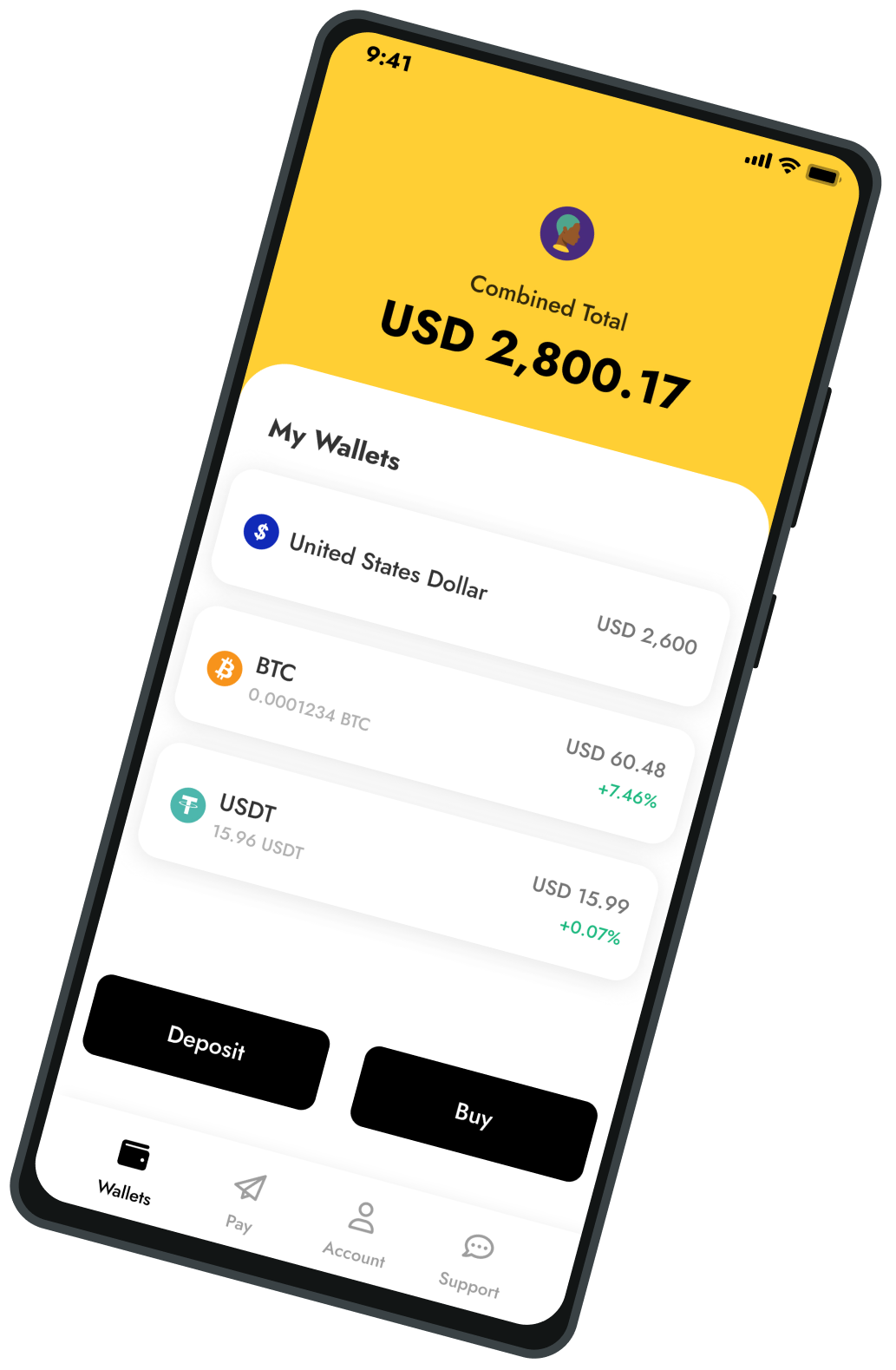Crypto Scoop: Bitcoin Hits A 2-Month Low Spurring $1billion In Liquidations
Crypto Scoop
Back to blog
Yellow Card
August, 18 2023
Crypto Scoop
On this page
Bitcoin drops to a 2-month low while Tether explores innovation in USDT support and Bitcoin mining.
Amid price dips in Ethereum and Bitcoin, we see exciting new crypto initiatives. In this edition of the crypto scoop, we review the following:
- Price moves of top cryptocurrencies
- Tether’s Bitcoin mining initiative
- El Salvador’s bitcoin education initiative
- Visa’s Ethereum initiative
Bitcoin Hits A 2-Month Low Spurring $1billion In Liquidations
In a surprising turn of events for the cryptocurrency world, Bitcoin and Ethereum, notorious for their unpredictable fluctuations, have entered a period of relative calm. Volatile Bitcoin and Ethereum have hit a pause in their turbulent journey, experiencing a significant drop in their historical volatility. Recent data from Kaiko Research reveals that the 90-day volatility indexes for Bitcoin (BTC) and Ethereum (ETH) have reached multi-year lows, declining by 35% and 37%, respectively. This unexpected calm has led to an intriguing twist, as these leading digital currencies now find themselves less volatile than even oil, which currently sits at a volatility rate of 41%.
Adding to the evolving narrative, a dormant Bitcoin address that had remained untouched since its creation on November 9, 2010, suddenly sprang to life. After lying dormant for an astonishing 12.9 years, the address executed a transaction involving a remarkable 1,005 bitcoins, a sum that has now surged in value to exceed an impressive $29 million.
On August 14, both Bitcoin and Ethereum experienced sharp price drops. Bitcoin's value plummeted to $25,000, while Ethereum's price tumbled to $1,620.54. Bitcoin's price reached lows not seen in two months, ultimately leading to almost $1 billion in liquidations across the broader crypto market.
Following this tumultuous event, Bitcoin slightly rebounded, trading at $26,386. Ethereum, on the other hand, showcased a more optimistic turn of events. Its price surged by approximately 11% to $1,700, fueled by news that the United States Securities and Exchange Commission (SEC) is poised to greenlight the launch of exchange-traded funds (ETFs) based on Ether Futures. The SEC appears inclined to approve applications from nearly twelve companies, including ProShares, Volatility Shares, Bitwise, and Roundhill, which have all filed for Ether futures ETFs in recent weeks. This development brings a new layer of potential to the ever-evolving landscape of cryptocurrencies and their financial applications.
Tether Reviews USDT Support and Explores Bitcoin Mining Software for Innovation
Tether, a leading stablecoin provider, recently announced its decision to discontinue support for its USDT stablecoin on several blockchains and layers. The affected networks include Omni Layer, Kusama, and Bitcoin Cash SLP implementations of USDT. This move was prompted by challenges faced by the Omni Layer, the original Bitcoin-based network for USDT issuance. Tether indicated its openness to reconsider this decision if Omni's usage increases in the future. Instead, Tether will focus on offering its Bitcoin-based USDT on RGB, a layer-2 and layer-3 network for Bitcoin, as well as the Lightning Network. The company will cease minting USDT on the affected networks starting August 17 while still facilitating normal redemption for at least a year and allowing trading on exchanges.
Tether is also venturing into specialised software development aimed at optimising Bitcoin mining and renewable energy operations through advanced data analytics. Paolo Ardoino, Tether's Chief Technology Officer, highlighted the need for enhanced analytical tools to improve the efficiency and performance of mining sites. Existing cloud-based solutions lack the desired level of customisation and real-time data analysis required for optimising mining and energy outputs. Tether's upcoming software seeks to bridge this gap by providing more in-depth orchestration capabilities and insightful real-time data analysis for mining operations.
El Salvador’s Bitcoiners Teach Young Students About Bitcoin And The Economy
Young students in El Salvador, some as young as 12 years old, are receiving early exposure to Bitcoin adoption through an initiative led by the Bitcoin Beach community. Roman Martínez, a prominent figure within the Bitcoin Beach movement, shared with Cointelegraph that imparting knowledge about Bitcoin, finances, and the economy at a young age could potentially pave the way for a brighter future for many disadvantaged children.
Bitcoin Beach engages in after-school programs that empower children with the skills needed to navigate the world of Bitcoin. As part of these programs, the community organises visits to schools every Friday, where discussions about money and aspirations take place. The students are taught how to set up their own Bitcoin wallets. They are guided in receiving their initial satoshi, the smallest unit of Bitcoin, and are even given hands-on experience in conducting their first Bitcoin transactions.
By introducing these youngsters to the principles of cryptocurrency and financial literacy, Bitcoin Beach aims to equip them with valuable tools that may enhance their opportunities and prospects in life. This proactive approach to crypto education demonstrates a commitment to fostering a new generation that is both well-versed in digital currencies and better prepared to navigate the complexities of the modern economy.
Visa Pilots Crypto Gas Fee Payments via Cards, Streamlining Ethereum Transactions
Visa is actively testing a groundbreaking solution that could revolutionise how users manage gas fees for on-chain Ethereum transactions. By leveraging Ethereum's ERC-4337 standard and a smart contract known as "Paymaster," Visa aims to simplify the gas fee settlement process.
Mustafa Bedawala, a Visa product manager, introduced this initiative, highlighting the existing challenge of users needing to monitor their Ether (ETH) balances to cover dynamic gas fees. The conventional approach involves obtaining ETH from an exchange and then transferring it to wallets, a process that often leads to complexities due to fluctuating gas prices.
Visa's innovative procedure involves initiating an Ethereum transaction through a wallet, which is then directed to the Paymaster. This web service calculates the gas fee, charges Visa through Cybersource, and obtains a digital signature. After swift validation, the signature is appended by the wallet and transmitted to Ethereum. The Paymaster validates the signature and manages the gas fee, streamlining the transaction process.
By incorporating this approach, Visa seeks to enhance the efficiency and user experience of Ethereum transactions, potentially simplifying the interaction between cryptocurrencies and traditional financial systems.
Disclaimer: This article is for information purposes only and should not be construed as legal, tax, investment or financial advice. Nothing contained in this article constitutes a solicitation, recommendation, endorsement or offer by Yellow Card to buy or sell any digital asset. There is risk involved in investing or transacting in digital assets, please seek professional advice if you require one. We do not assume any responsibility or liability for any loss or damage you may incur dealing with digital assets. For more information on Digital Asset Risk Disclosure please see - Risk Disclosure.



